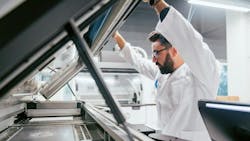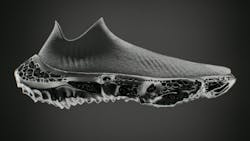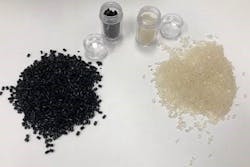How 3D Printing Can Drive Us Toward a More Sustainable Future
3D printing has been rapidly evolving in recent years. Developments in 3D hardware, firmware and software, as well as progress in advanced data analytics, artificial intelligence (AI) and automation are increasingly making cutting-edge 3D printing technology a viable option for even more manufacturers around the world.
Industries that specialize in mass-personalized goods stand to gain substantial value from this improved level of repeatability and dependability. Be it personalized devices like prosthetics and orthotics or consumer products like running shoes, tailoring the experience to each individual customer is becoming standard practice for improving performance, treatment and loyalty.
Not only does 3D printing have the power to redefine creation, innovation and productivity across markets and industries, but it also opens up myriad opportunities to positively impact our world. It is progressively being used as a vehicle for more sustainable manufacturing, in response to a heightened awareness of, and associated sustainability goals and regulations around, climate change. This might come in the form of more localized, on-demand production, new waste-minimizing processes, more eco-conscious packaging alternatives to harmful plastics, or the use of renewable energy for material production.
Real-life examples include sporting goods retailer Decathlon’s latest footwear concept, which features a midsole and outsole produced using 3D technology and Lonati’s knitted uppers. Because the shoes are not glued together, they can be recycled more easily, while the use of digital manufacturing technologies not only enables customer personalization but also less reliance on physical stock.
Similarly, the Italian multinational group Legor is now using 3D technology to create jewelry and fashion accessories made from 100% precious metals from recycled sources, making progress toward its goals of enabling a circular economy.
Reaching Sustainability Goals via Technology Investment
Continuous, structural investments in technology like additive manufacturing, or 3D printing, offer manufacturers a whole host of opportunities to operate more sustainably. Faster development, shorter lead-times, less resource-intensive production and high-reusability materials all help to reduce net zero waste and minimize carbon footprints. This, in turn, can help drive innovation in sustainable design, production and distribution—all of which supports manufacturers as they strive to meet their sustainability goals.
In fact, additive manufacturing is a key enabler of a circular economy. By prioritizing the reuse of materials and products all along the production line, 3D printing can be pivotal in steering us toward a future where manufacturing’s impact on the environment is drastically reduced, empowering the adoption of bio-based materials such as PA11 and leading to the creation of inherently sustainable designs and products.
At the same time, we’re seeing an increase in industry partner recycling programs that enable the recycling of residual 3D printed powders and parts, preventing them from being disposed of via costly, environmentally harmful practices such as landfilling or burning, and thereby drastically reducing production waste.
3D printing is also facilitating the creation of localized, on-demand parts, reducing material usage and waste, and increasing the longevity of products by making spare parts readily available. This lessens the reliance on—and, thereby, the environmental footprint of—extensive inventories and warehouses globally, underscoring the technology’s critical role in achieving environmental sustainability goals, while maintaining high levels of productivity in the industrial sector.
Adapting the Manufacturing Mindset
Responding to the effects of climate change is a necessity for us all, but as an industry we can also choose to see it as an opportunity to replace an outdated manufacturing mindset with one that is more adaptable and flexible in nature. Localized, on-demand production; improved yield rates and product quality; minimized waste; and maximized efficiency already provide so much to lean into with 3D printing.
The technology promises to improve scalability and output even further, while expanding opportunities for breakthrough applications to be brought to market. From material development and product design right through to production, sustainability can be infused at every point of the value chain as 3D printing integrates alongside other high-performance technologies in more efficient and productive factory configurations.
HP, for example, is working with materials partner Arkema to develop bio-based materials made with renewable castor oil and using biomethane to further reduce its carbon footprint. While with Evonik, the company is doubling down on sustainability with the 3D High Reusability PA12. Made using renewable energy during production, the material can help reduce the carbon footprint of commonly used PA12 material by 49% without altering its properties.
Sustainability in Action
As a long-time advocate and early adopter of breakthrough technologies, HP has invested significantly in building and democratizing access to 3D printing solutions. Taking it a step further, we recently introduced three new core areas of focus that incorporate its solutions, capabilities and materials, to help advance more sustainable manufacturing—including reducing carbon footprint, enabling circularity and measuring impact—to help customers understand their carbon footprint.
We are motivated by the success stories of our partners and customers who are already so enthusiastically leveraging the inherent flexibility and sustainability in design and logistics that 3D printing offers. This includes partners like automotive manufacturing giant Ford, which joined forces with HP on an initiative to transform waste materials from 3D printing into car parts.
And Inverto Earth uses our 3D-printed parts for their drone payloads that enable them to plant in remote areas. Through this partnership, we are committed to restoring 18,000m2 of mangrove forest in Indonesia as well as other ecosystems in need of restoration.
We are using 3D printing paired with technologies such as AI and automation to unlock new design possibilities that would have been unthinkable—impossible even—via traditional manufacturing methods, and our supply chains and manufacturing processes are becoming more streamlined and efficient as a result. We are stronger and more effective when we work together as an industry, and 3D printing can be the driving force that unites and empowers us to be the change we want to see in the world.
READ MORE: Sustainability Isn’t Hard: You’re Already Doing It
About the Author

Filiz Akdede
Global Vice President, HP 3D Business
Filiz Akdede is global vice president of HP 3D Business in Barcelona. She graduated from Boğaziçi University, Department of Economics and completed the Creative Leadership Program at Stanford University in 2017 and Aspirational Leadership Program at University of California, Berkeley. Akdede was among the top 10 leaders in the “Turkey’s Most Effective Women Leaders” list conducted by Ekonomist Magazine in 2017 and 2018. In 2023, she was listed among the “Global 50 Turkish Leaders” by Capital Magazine. Akdede speaks about sustainability, mega trends, change management, diversity, inclusion, leadership, teamwork and company culture topics.




